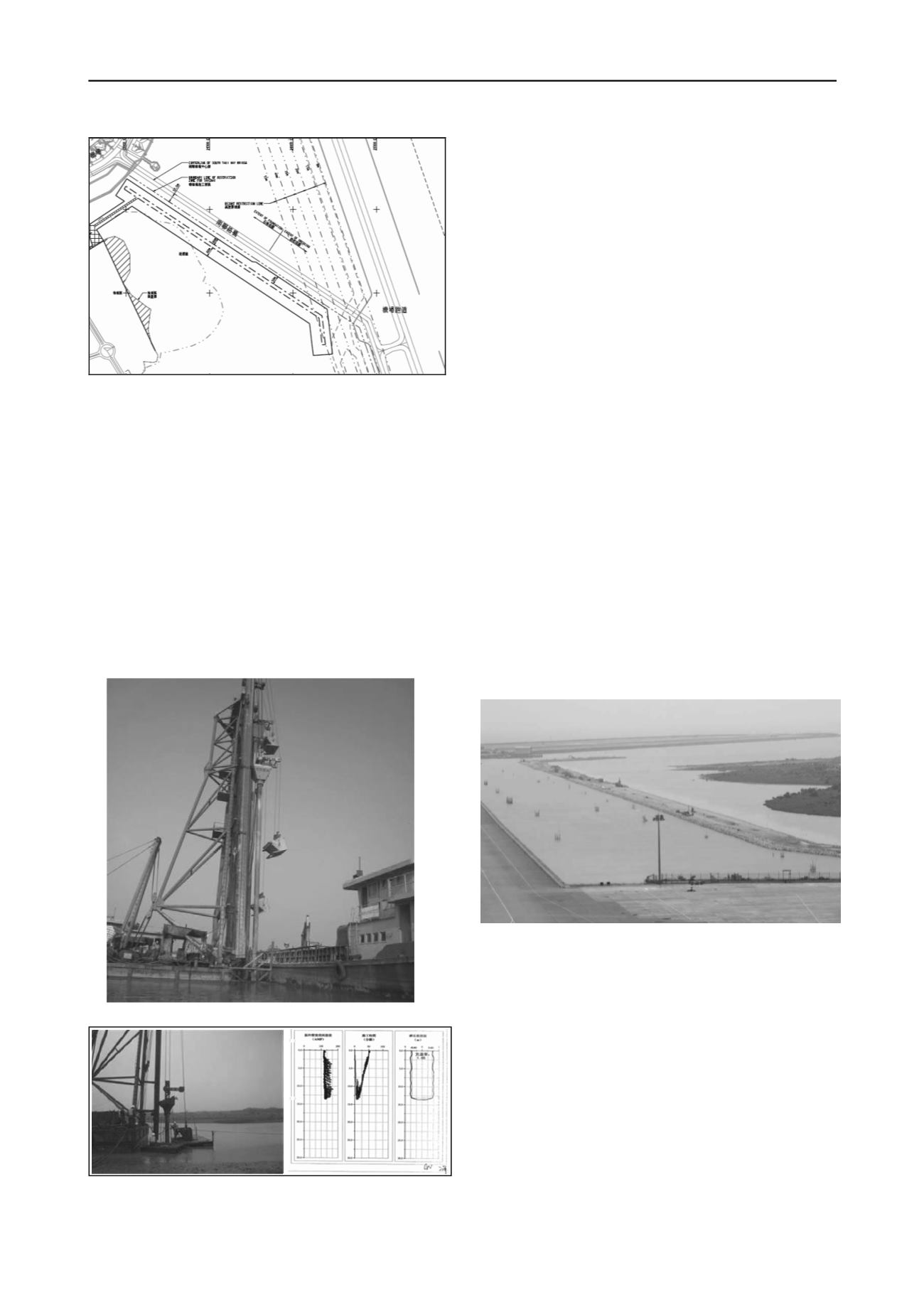
2932
Proceedings of the 18
th
International Conference on Soil Mechanics and Geotechnical Engineering, Paris 2013
3.5 Monitoring of Taxiway and Taxiway Piles
The movement of the taxiway pile foundation and the MIA
seawall were closely monitored during the seawall construction
phase. No significant movement of the taxiway, the piles and
the seawall was measured. Monitoring will continue during the
future landfilling operation stage when the loading is
maximized in the landfill.
Figure 10. Height Restriction of the Site near the Runway of MIA
There was no readily available land access to the site as it is
restricted by the landfill site and the MIA. Marine access was
also limited due to the shallow draft and the contractor had to
carry out additional dredging for navigation. The original
design proposed a temporary platform for landbased stone
column construction. During the construction stage, the
contractor changed to marine based method for installation of
the stone columns.
To ensure the mud will not be mixed with the stone
aggregates due to collapse of hole or necking, wet bottom feed
method was adopted (Figure 11). Acceptance of the stone
column was based on the depth vsSC diameter plot, and degree
of compaction (volume of aggregate, energy consumed)from the
installation records. Site trial was carried out to determine the
optimum arrangement on apparatus, setup, minimum required
compaction time, amount of aggregate consumption per metre
length, andmaximum energy consumption (Figure 12).
4 SUMMARY AND CONCLUSIONS
Construction waste was dumped over very soft marine mud
at the Cotai Landfill of Macau. This uncontrolled dumping
pushed the very soft mud and generating mudwaves that were
then encroaching onto the piles supporting the taxiway bridges
of the Macau International Airport.
Due to the seriousness of the problem, government of Macau
commissioned AECOM Asia Co. Ltd., to develop a robust
solution to contain the construction waste being dumped in the
area and to protect the taxiway bridge of the Macau Airport.
The design solution developed was to construct a containment
bund/seawall that is founded on a stiffened and strengthened
soil block by improving the soft clay with stone columns. This
paper presented the design approach of the containment bund
including the limited equilibrium stability analysis and the
numerical analyses carried out that demonstrated that the
solution is appropriate as the bund will contain the landfill with
minimal impact on the taxiway bridge piles. The analyses also
demonstrated that the impacts during construction are also
negligible.
During construction, the taxiway and seawall was monitored
by independent parties and survey results indicate the
installation of the stone columns and construction of the bund
had minimal impact on the taxiways foundation piles. The
seawall has been completed in November 2011 (Figure 13).
Figure 13. The Completed Stone Column Seawall
5 ACKNOWLEDGEMENTS
This paper is published with the permission of the Head of
Gabinete para o Desenvolvimento de Infra-estruturas of the
Macau SAR Government.
Figure 11. Stone Column Plant for Wet Bottom Feed installation
6 REFERENCES
Barksdale, R.D. & Bachus R.C. 1983.
Design and Construction of Stone
Columns – Volume 1
. US department of Transport.
Laboratório de Engenharia Civil de Macau 2008a.
Inspection Report of
Southern Taxiway Bridge Piles
.
LECM, Macau
Figure 12. Site Trial Establishingthe Acceptance Criteria
Laboratório de Engenharia Civil de Macau 2008b.
Numerical analysis
report on the landfill mudwaves impact to Southern Taxiway
Bridge
.
LECM, Macau


